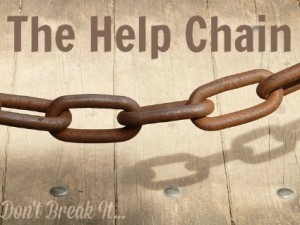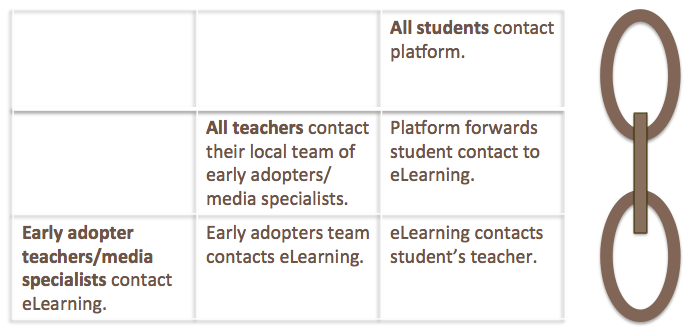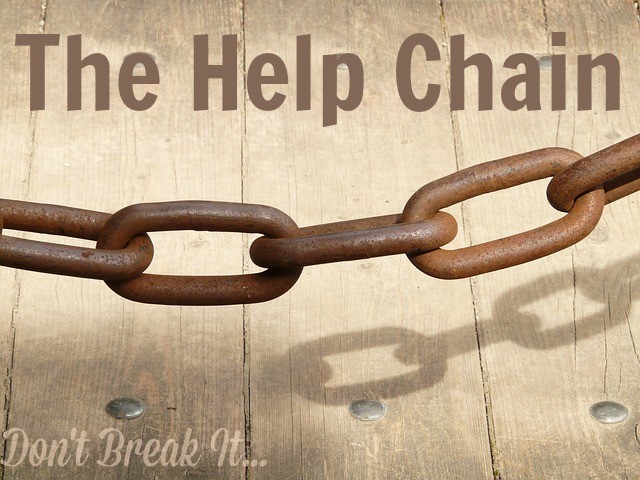I heard an interesting and totally unrelated story on The Diane Rehm Show which started me thinking of interactions which need to happen for end users to receive assistance.
If measuring a chain of events from start to finish can quantify the speed of help, how could I utilize that analysis to expedite the help end users of my programs receive?
 I first need to identify the current links in the chain of help offered to end users and then see which chains I can remove to speed up the assistance provided to end users.
I first need to identify the current links in the chain of help offered to end users and then see which chains I can remove to speed up the assistance provided to end users.
How do users ask for help?
We identified and trained some teachers as early adopters of the technology. These teachers along with school-based media specialists can reach out directly to me and two other team members via email, Microsoft Lync, and Twitter.
All teachers and students can ask for help within the platform. Student requests are emailed to me. Teacher requests go through a product support desk and are only emailed to me when local assistance is required.
Teachers not identified as early adopters go to a locally formed team to answer questions and for training. This team typically consists of the local media specialist, early adopters, and locally selected teachers. 
When I think about the number and quality of questions which reach my work group (and the nature of issues), this is working in the current year and hopefully it will serve adequately next school year as well. The fact that all teachers and users can reach out to the platform for help at the time of need is essential to scaling up access to the platform. Many requests for help are ones which the platform help desk can point our teachers to their documentation and solve the issue for them. That allows us to help those who are either not comfortable using the help desk function or have county-specific requests/issues. If we remove the end user accessibility directly to the platform help desk the quantity and quality of calls my work group receives would sky rocket and not be optimum.
From the end user point of view they are at most two events away from help, students have closer access at school via teachers. Teachers can always reach out to the platform help desk so they are one interaction away from assistance. When I think of other systems we use I am embarrassed at how many events have to occur and with more dependencies than for this platform. If support remains the same for next year I expect our end users to be happy. I also expect to experience some pressure associated with our other systems not as responsive as this one.
I am pleased with the progress we have made and look forward to the changes we are challenged to make to shorten all help chains.






Leave a Reply